|
 Secure Site
Secure Site
|
 |
Archive for July, 2012
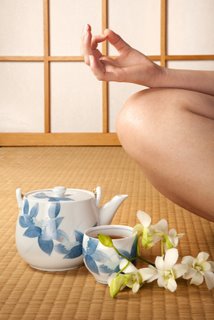 enjoy a meditative cup of tea A meditative act
Many tea drinkers say that drinking tea is not the sole purpose for the ceremony. At the Rocky Mountain Tea Festival, an annual summer event hosted by the Dushanbe Teahouse in Boulder, Colorado, tea professionals from around the country impart information on ceremonies and tea varieties. At the heart of every presentation is the message that the spirit of tea (chado) is intricately linked with simplicity and calmness.
Fellman, a busy woman who values the sense of well-being she derives from tea, strikes a happy medium between a to-go mentality and a traditional tea ceremony by preparing two spots in her home with an electric kettle, canisters of loose tea, and a cup or teapot. Selecting her spots carefully to provide “something nice to rest my eyes on that feels nourishing to me,” Fellman can enjoy a good cup of tea in twenty minutes. When brewing tea, Fellman listens to the water bubble and watches for steam. She looks carefully at the amount of tea used, breathes in the gentle fragrance of the leaves, and waits for the warmth of the teacup to pull the tension from her shoulders. “The mindful process of making a good cup of tea,” she says, “helps me take time to stop and focus.”
It’s no coincidence that elements of tea preparation are reminiscent of meditation. Buddhist monks served tea in places where a rogi, or path, had to be crossed in order to reach the tearoom and, in essence, leave the cares of the world behind. Today, tea drinkers focus on the art of brewing tea to separate themselves from daily concerns.
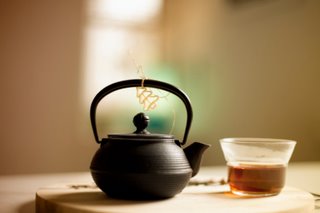 time for a meditative cup of tea Tea professionals suggest taking classes to learn the basic elements and history of the tea ceremony. “You can’t read a book and understand it,” says Austin Babcock, a member of the Washington, D.C., branch of the Urasenke Foundation, who likens tea ceremony education to mastering a martial art or learning to play an instrument. “It’s about getting it with your body. It’s an experience.” The Urasenke Foundation, a school of tea that offers classes worldwide, was founded by sixteenth-century tea master Sen no Rikyu, who is credited with establishing tea as a social and spiritual practice.
“There is a Zen quality” to tea ceremony, says Babcock. It creates “a calming, meditative space that allows you to open up your heart to another person. It is a powerful act of sharing . . . and of savoring the moment.”
adapted from Natural Home Magazine, September/October 2002 by Heather Grimshaw
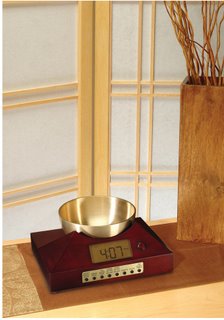 a Tibetan bowl/gong timer for timing tea Now & Zen’s Mindfulness Clock & Timer Store
1638 Pearl Street
Boulder, CO 80302
(800) 779-6383
Posted in intention, Meditation Timers, Meditation Tools, mindfulness practice, Zen Timepiece by Now & Zen, Zen Timers
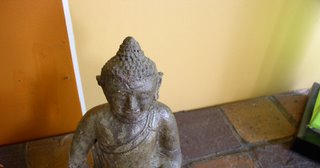 How to meditate Some traditions believe that, to truly practice meditation, you must turn your back on the world: Monks in Thailand live in the woods, hundreds of miles from civilization. Other traditions emphatically state that you must engage in the whole of life, as Buddhist meditation teacher Jack Kornfield attests: “We may start by practicing meditation much like practicing piano. Eventually, when we become proficient, we will not need to practice anymore. Just as playing becomes practice, everything we do will become meditation. In the end, meditation techniques transcend even themselves. Then, there will be neither meditation or non-meditation. Just what is.”
Those disinclined to move into the deep woods, or not far enough along the woodsy path to make every moment a meditation, can create a proscribed area for meditation. While doing this, pay attention to Zen Master Shunryu Suzuki’s advice in his classic treatise, Zen Mind, Beginner’s Mind (Weatherill, 1990): Try to see the space without preconceptions or expectations. As Suzuki puts it,”In the beginner’s mind, there are many possibilities; in the expert’s mind, there are few.” Keep it simple, and make it real.
Our Zen Timepiece’s acoustic 6-inch brass bowl-gong clock is the world’s ultimate alarm clock, practice timer, and “mindfulness bell.”
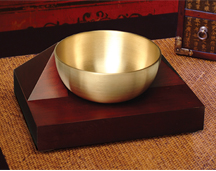 Meditation Timers and Alarm Clocks for a Peaceful End to Your Mindfulness Practice It fills your environment with beautifully complex tones whenever it strikes. It’s exquisite sounds summon your consciousness into awakening with a series of subtle gongs that provide an elegant beginning to your day. Once you experience the Zen Timepiece’s progressive awakening, you’ll never want to wake up any other way.
Our Singing Bowl Meditation Timer also serves as a countdown and interval timer for yoga, meditation, bodywork, etc.; and it can also be set to chime on the hour as a tool for “mindfulness.”
adapted from Natural Home Magazine, November/December 2000 by Kelly Smith
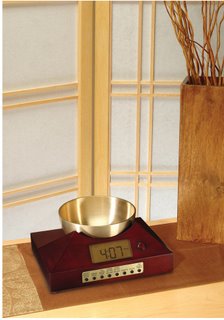 Singing Bowl Meditation Timer from Now & Zen, Inc. - Boulder, CO Now & Zen’s Meditation Timer & Alarm Clock Store
1638 Pearl Street
Boulder, CO 80302
(800) 779-6383
Posted in intention, Meditation Timers, Meditation Tools, mindfulness practice, Zen Timers
 Awareness As a sustainable communities professor at Dominican University of California, I love to give my students strange assignments and then watch them grow. In turn, they’ve taught me much about coming into the right relationship with life.
Modern living involves high levels of sensory input—much of it meaningless or even nasty. So we shut down. Our magnificent equipment—which allowed our ancestors to feel a shift in the breeze, smell ripening fruit, hear every footfall and see subtle color changes—goes into standby mode. But we need our senses to tell us what we crave (birdsong, sunshine, a gurgling stream, ripe fruit) and what we reject (leaf blowers, smog, clutter). Our senses bring us to life.
So at the beginning of class, I ask students to pause. “Close your eyes, take a deep breath and relax. What do you smell? What do you hear—near, far, steady, intermittent? How does the air feel on your skin—dry, moist, moving, still, cold, warm? Now slowly open your eyes, and notice shapes, colors, light, dark, near, far. What appeals to your senses, and what is a turnoff? What are you aware of now that you weren’t before?”
Suddenly, the students are aware of both the unpleasant and the delicious. They dislike the sounds of traffic, ticking clocks, and mechanical heating and cooling systems. And if there is even one green growing thing, one ray of sunshine or one bird singing, they fall in love with it. In fact, if the weather is decent, they ask, “Can we have class outside?”
Where are you?
At the end of class, I send students home with an expanded assignment: At least once a day, stop and notice how the air feels, where the sun is, the wind’s direction, the terrain, vegetation, critters; then write it all down. This exercise has changed a few lives.
Matt, an urban apartment dweller, realized that he’d been tolerating noise levels that caused tension by day and insomnia by night; he moved, and now he feels like a different person.
Cheryl lives in a suburb and takes the bus to work. She recently began walking to a neighborhood bus stop rather than driving to a central stop, partly so she could spend more time outdoors. She became more aware of trees, birds and weather conditions and more familiar with her neighbors. She noticed that birds were more active and vocal when the sky was clear; she noticed when the geese started flying south and missed them when they were gone. Observing the trees, she noticed the wind’s direction. “The peaceful window of time to myself first thing in the morning helps me start my day with more clarity and calmness,” she says. “And walking home at night, I enjoy gazing at the beautiful night sky and the changing moon.”
Josh lives near the ocean. Sensory tune-ins made him more aware of the breeze, and he wanted to play with it. He put up a wind sock and soon noticed that the wind usually came from the northwest. But why? He explored regional wind patterns, and I encouraged him to study storm fronts and cyclonic wind patterns. Then he bought a little weather station to keep track of wind, air temperature and barometric pressure. After I suggested that he also note his physical and emotional feelings, he had an epiphany: His moods were often directly related to weather conditions.
Cheryl and Josh are beginning to grasp that nature is everywhere and that everything affects everything else. This also has a practical application: They are gaining observation skills that will make them good ecological designers, able to create habitations that are powered by natural elements and friendly to the biosphere.
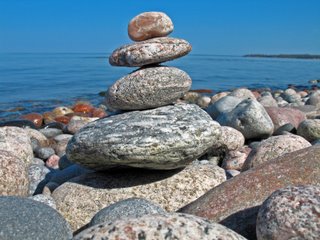 balancing rocks In a culture that treats our bodies as isolated machines, it’s world-changing to notice our craving for harmony with other natural phenomena—and starting to learn how to satisfy it. Getting outdoors, listening to our bodies, watching birds, tracking breezes and cycling with the sun are enjoyable in themselves, but they lead us to something much larger: an understanding of how the world works. And once we get it, there’s no going back. The insights keep multiplying, and we’re motivated to greater and deeper actions by feeling truly, deeply alive.
As my student Brian says, “When I stop everything and sit as part of it all, I feel the connection rather than intellectualizing interconnectedness.” Because everything is interconnected, we can start our journey anywhere, with deceptively simple steps: stop, look, listen, feel.
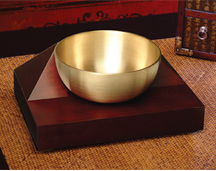 Singing Bowl Meditation Timer from Now & Zen, Inc. - Boulder, CO The Zen Timepiece (with Tibetan- Singing Bowl) serves as a countdown and interval timer for yoga, meditation, bodywork, etc.; and it can also be set to chime on the hour as a tool for “mindfulness.”
adapted from Natural Home Magazine, September/November 2009 by CarolVenolia
Carol Venolia is an eco-architect and co-author of Natural Remodeling for the Not-So-Green House (Lark Books, 2006). She teaches in the Sustainable Communities program at Dominican University of California.
 Chime Meditation Timers and Clocks with Chime in Bamboo, Walnut, Maple, and Black Lacquer Now & Zen’s Meditation Timer & Alarm Clock Shop
1638 Pearl Street
Boulder, CO 80302
(800) 779-6383
Posted in Insomnia, mindfulness practice, Natural Awakening, nature, Well-being
 Meditation You know it when stress takes hold: Your heart starts racing. Your jaw clenches. It’s nearly impossible to concentrate.
And over the long run, stress can contribute to serious health problems, including high blood pressure, heart attacks, ulcers and lower back pain.
“The problem most often comes up when the demands of the job outweigh the employee’s ability to control his or her environment,” explained Fred Blosser, a spokesman for the National Institute for Occupational Health and Safety, the federal agency that researches how to prevent work-related injury and illness.
Blosser said that today there is more awareness among employers that stress can influence workers’ well-being, health and productivity. NIOSH and the American Psychological Association advise companies to lead the charge in reducing job stress by overhauling an organization’s structure and its expectations of employees.
Those recommendations include ensuring that workloads are in line with workers’ capabilities and resources; defining workers’ roles and responsibilities; and establishing work schedules that are compatible with demands and responsibilities outside the job.
But Dr. Redford Williams, who teaches psychiatry and behavioral sciences at Duke University, said too few businesses offer effective stress-management programs for employees. He said it is up to individuals to learn how to handle a difficult environment by honestly assessing the triggers that make their blood boil.
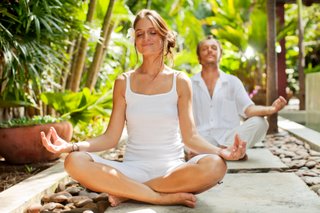 Meditation “You cannot run from stress,” said Williams. “You cannot hide. You need evaluation tools so you can make a rational decision about chilling out or coming out swinging to change the situation.”
Are You Worth It?
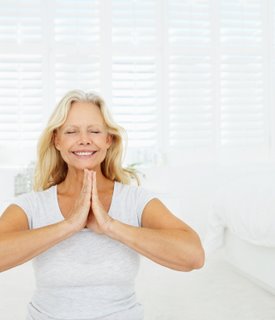 Reduce Stress In his new book, “In Control,” published by Rodale next month, Williams offers tips for people eager to alter their feelings of frustration on the job. He advises that you take stock of the problem that is causing you angst, and recommends his “I Am Worth It” method.
“I” stands for “Is what’s stressing me out important? Or is it simply a minor annoyance?” “A” stands for “Is my response to the stressor appropriate? Am I responding the way any other person would or am I overreacting?” “M” stands for “Is the situation modifiable? Can it be changed?”
And “Worth It” asks a person to examine what’s at stake in taking some action. For example, will it help or hurt you to go over your new manager’s head to discuss your overwhelming workload, or would it be more prudent to wait until your new boss has settled into the job?
Williams believes it is critical to distinguish whether situations that set you off stem from something valid and whether they’re possible to fix. If the problem is minor (a cubicle neighbor who talks too loudly on the phone) or out of your control (increasing health care costs or the threat of lay-offs), Williams said a brief timeout for meditation can help.
“Take a one minute relaxation break,” he said. “Sit in a chair, both feet on the ground. Take in a slow, deep breath and say to yourself ‘Relax’ when you exhale.”
Finally, experts agree that exercise — as well as a healthy diet — can also play a valuable role in reducing stress in and out of the workplace.
Physical activity, including walking, swimming, running and even gardening for at least 30 minutes, three times a week can elevate your mood and help you cope.
Although meditation can be done in almost any context, practitioners usually employ a quiet, tranquil space, a meditation cushion or bench, and some kind of timing device to time the meditation session. Ideally, the more these accoutrements can be integrated the better. Thus, it is conducive to a satisfying meditation practice to have a timer or clock that is tranquil and beautiful. Using a kitchen timer or beeper watch is less than ideal. And it was with these considerations in mind that we designed our digital Zen Alarm Clock and practice timer. This unique “Zen Clock” features a long-resonating acoustic chime that brings the meditation session to a gradual close, preserving the environment of stillness while also acting as an effective time signal. The Digital Zen Clock can be programmed to chime at the end of the meditation session or periodically throughout the session as a kind of sonic yantra. The beauty and functionality of the Zen Clock/Timer makes it a meditation tool that can actually help you “make time” for meditation in your life.
adapted from abcnews.go.com by Heather Cabot
Now & Zen – The Digital Meditation Timer Shop
1638 Pearl Street
Boulder, CO 80302
(800) 779-6383
orders@now-zen.com
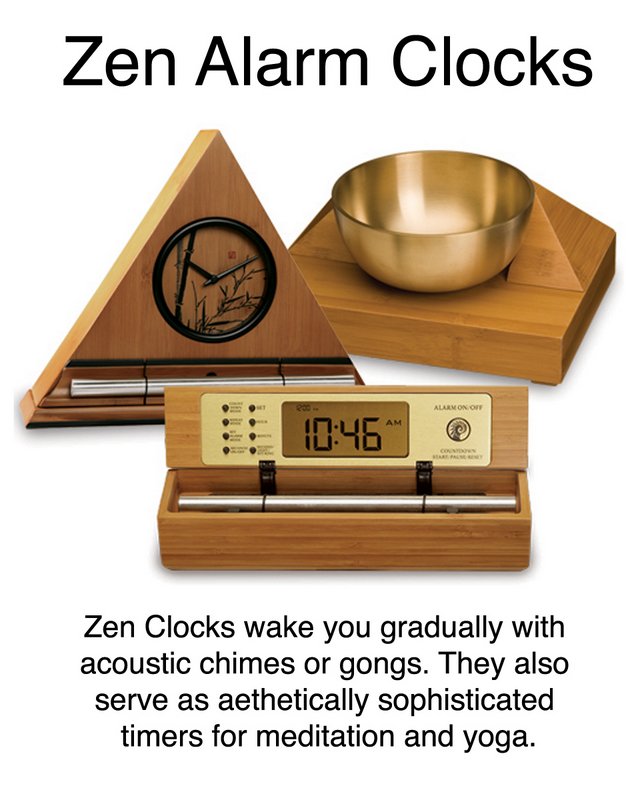 Meditation timers and acoustic clocks
Posted in Bamboo Chime Clocks
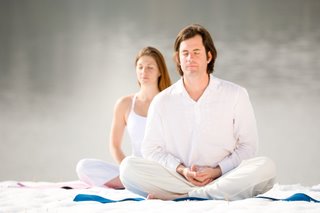 Meditation Can Wish You Well New research suggests that qualities the world desperately needs more of — love, kindness and compassion — are indeed teachable.
Imaging technology shows that people who practice meditation that focuses on kindness and compassion actually undergo changes in areas of the brain that make them more in tune to what others are feeling.
“Potentially one can train oneself to behave in a way which is more benevolent and altruistic,” said study co-author Antoine Lutz, an associate scientist at the University of Wisconsin-Madison.
How far this idea can be extrapolated remains in question, though.
“I think there’s no question that people can benefit from these practices,” said Dr. Louis Teichholz, medical director of complementary medicine and chief of cardiology at Hackensack University Medical Center in New Jersey. “I think the question is how easy is it to get trained enough so that it will make a clinical difference, and I don’t think this study answers that.”
The findings were published in the March 26 issue of the Public Library of Science One.
Recent brain-imaging studies have suggested that the insula and the anterior cingulate cortices regions are involved in the empathic response to other people’s pain. But not much is known about how cultivating compassion might affect brain circuitry.
And previous research has indicated that meditation may reduce the brain’s reaction to pain, and that it may actually improve cardiovascular health by decreasing the risk of metabolic syndrome.
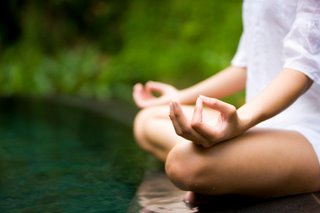 Meditation Pose “The main research question was to see whether some positive qualities such as loving-kindness and compassion or, in general, pro-social altruistic behavior, can be understood as skills and can be trained,” Lutz explained.
In the same way that training in sports or chess or music produces functional and structural changes in the brain, the Wisconsin researchers wanted to see if cultivating compassion through the practice of meditation also produced brain changes — suggesting that compassion could be viewed as a learned skill.
The study involved 32 people: 16 Tibetan monks and lay practitioners, who had meditated for a minimum of 10,000 hours throughout their lifetime (the “experts”); and 16 control subjects, who had only recently been taught the basics of compassion meditation (the “novices”).
The senior author of the paper, Richard Davidson, a professor of psychiatry and psychology at the University of Wisconsin-Madison and an expert on imaging the effects of meditation, has been collaborating with the Dalai Lama since 1992, studying the brains of Tibetan monks.
For the study, individuals in the control group were instructed first to wish loved ones well-being and freedom from pain, then to wish such benefits to humankind as a whole.
“We looked at whether there were any differences between experts and novices in generating compassion with the idea that a central practice in this tradition [of meditation] is to cultivate these positive emotions,” Lutz said. “We wanted to see if there were any differences in the way the brain was reacting.”
Each participant was hooked up to a functional MRI both while meditating and not meditating. During each state, the participants heard sounds designed to produce responses: the negative sound of a distressed woman, the positive sound of a baby laughing, and the neutral sound of background noise from a restaurant.
“We showed altered activation in brain circuitry that was previously linked to empathy and perspective-taking or the capacity to understand other’s intentions and mental states and, more precisely, the insula was more activated, particularly in response to negative emotional sounds,” Lutz said.
In the monks, especially, these areas of the brain were activated even more when they hard the cries of the distressed woman, she said.
 Meditation The study authors hope the findings might one day help with a range of problems, including reducing the incidence of bullying in schools or helping people with depression.
“The next step is to see if this works,” Lutz said. “If it works, then it can be applied to selective populations — for instance, depressed people or, more broadly, in education.”
More information
The U.S. National Center for Complementary and Alternative Medicinehas more about meditation and health.
Use our unique “Zen Clock” which functions as a Yoga Timer. It features a long-resonating acoustic chime that brings your meditation or yoga session to a gradual close, preserving the environment of stillness while also acting as an effective time signal. Our Yoga Timer & Clock can be programmed to chime at the end of the meditation or yoga session or periodically throughout the session as a kind of sonic yantra. The beauty and functionality of the Zen Clock/Timer makes it a meditation tool that can actually help you “make time” for meditation in your life. Bring yourself back to balance.
adapted from abcnew.go.com by Amanda Gardner
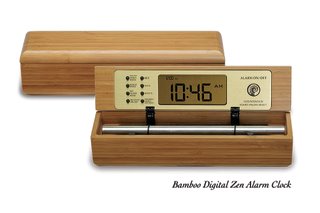 Digital Meditation Timer with Acoustic Chime Now & Zen – The Meditation Timer Shop
1638 Pearl Street
Boulder, CO 80302
(800) 779-6383
orders@now-zen.com
Posted in Bamboo Chime Clocks
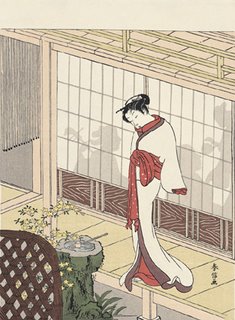 Getting More Sleep Can Improve Your Health - Harunobu Suzuki, Beauty at the Veranda President Bill Clinton’s stamina kept him so keyed up as he travelled around the world recently that it seemed hard to keep up with him, or figure out where we would see him next.
Clinton seemed to blame his recent heart troubles — he was fitted with stents to reopen a clogged artery –on a lack of sleep.
“I tell you what. I was quite tired over Christmas and afterward,” the former president said at a recent press conference. “But from the time of the Haiti earthquake which was a month ago today, I’ve been working a lot without sleeping much.”
And Clinton’s not the only one. Lack of sleep is the most common sleep complaint among Americans, according to the National Sleep Foundation.
Researchers say lack of sleep is connected to cardiovascular disease, hypertension and high blood pressure. It also compromises the immune system, contributes to obesity and severely impairs mental judgment.Dieting might be more difficult too. Recent findings also show that when you are sleep deprived, your body actually boosts production of the hormone that makes you hungry.
But research suggests that getting just one extra hour of sleep each night could dramatically affect your health. In fact, researchers from the University of Chicago found that those who bumped up their hours of sleep, from 6 to 7 hours had a 33 percent decreased chance of having clogged arteries.
But while the thought of sleeping in may seem enticing, for many Americans, it’s easier said than done.
 Getting More Sleep Can Improve Your Health - Harunobu Suzuki, Beauty at the Veranda Struggling to Stay Awake
Susan Roberts of Dahlonega, Ga. suffered from insomnia since childhood.
“I have been struggling with being sleepy all the time. Driving home from work I would have to stop and get a soda and a candy bar just to keep me awake,” Roberts said. “When I do fall asleep I end up waking up every two hours.”
She wakes up at 3:30 a.m. each morning and drives 53 miles one way to work — a routine she says she finds exhausting. Yet, she’s unable to rest. After many waking nights, Roberts said she felt her health and emotional well-being was at risk. Roberts eventually checked herself into the Northside Hospital Sleep Disorder Center in Atlanta.
How to Get that Extra Hour
Amid the hustle of every day stress, there are some simple steps people can take to get a better night’s sleep.
“You need to set aside the time for sleep. You need a few hours to unwind before. It takes time for the brain to wind down,” said Dr. Charles Czeisler, professor of sleep medicine at Harvard Medical School.
At Northside Hospital Sleep Disorders Center Roberts was taught “sleep hygiene,” — a healthy routine that should be practiced before bed.
Stimulants — soda, chocolate, any kind of caffeine — should be avoided at least four hours before bed, she said. She also said that you should not exercise three to four hours prior to sleep. Eating a light meal and eliminating alcohol consumption also helps. And lights should be dimmed and the TV turned off to help prepare the mind to relax into a slumber.
Roberts even quit cleaning her house at night. “I was having a problem going to sleep,” she said. “And doing heavy housework, I might as well have gone to the gym and worked out.”
And calling it an earlier night may show some benefits. In a 2009 study published in the New England Journal of Medicine, heart attacks in Sweden rose by 5 percent in that first week of spring, when many people were adjusting to losing an hour of sleep. In the fall when the clocks are reset, heart attacks dropped, according to the study.
 Getting More Sleep Can Improve Your Health “Most of these findings are so recent that the average physician is unaware of the link between chronic sleep deprivation and cardiovascular disease,” said Czeisler.
After learning more about her own pre-bed habits and changing some behaviors, Roberts is now on the right track with her sleep. She’s in bed by 9:30 p.m.and clocks in at least six hours of sleep– not ideal, but a major improvement for Roberts. Many know that it is not easy to get that extra hour, but as Roberts learned, never has it been so clear that its worth trying.
“I feel more alive, I have more energy, I can get my job done,” she said. “I’m not sitting at my desk falling asleep.” For more information on healthy sleep habits visit UnderstandingSleep.org
Boulder, Colorado—an innovative company has taken one of life’s most unpleasant experiences (being startled awake by your alarm clock early Monday morning), and transformed it into something to actually look forward to. “The Zen Alarm Clock,” uses soothing acoustic chimes that awaken users gently and gradually, making waking up a real pleasure. Rather than an artificial recorded sound played through a speaker, the Zen Clock features an alloy chime bar similar to a wind chime. When the clock’s alarm is triggered, its chime produces a long-resonating, beautiful acoustic tone reminiscent of a temple gong. Then, as the ring tone gradually fades away, the clock remains silent until it automatically strikes again three minutes later. The frequency of the chime strikes gradually increase over ten-minutes, eventually striking every five seconds, so they are guaranteed to wake up even the heaviest sleeper. This gentle, ten-minute “progressive awakening” leaves users feeling less groggy, and even helps with dream recall.
What makes this gentle awakening experience so exquisite is the sound of the natural acoustic chime, which has been tuned to produce the same tones as the tuning forks used by musical therapists. According to the product’s inventor, Steve McIntosh, “once you experience this way of being gradually awakened with beautiful acoustic tones, no other alarm clock will ever do.”
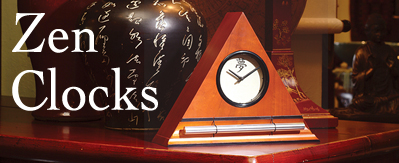 Gentle Zen Alarm Clocks with Chime Now & Zen, Inc.
1638 Pearl Street
Boulder, CO 80302
(800) 779-6383
orders@now-zen.com
Posted in Bamboo Chime Clocks
 Sleepiness Might Be in the Genes No matter how little they sleep, some people can keep a skip in their step while others will yawn and struggle through the day. A new study from the University of Pennsylvania School of Medicine found that the reason could be in our genes.
Researchers found that healthy people with one particular genetic variant were generally sleepier than those without the gene. About 25 percent of the general public has the genetic variant, called DQB1 *0602, but only a small percentage of them actually suffer from sleep problems.
One person who has been told by his doctor that he may have this genetic variation is Robert Gibson, a 43-year-old machine shop supervisor in Milan, Illinois. Sleep is supposed to rejuvenate the body, but for Gibson, it can be anything but invigorating.
 Sleepiness Might Be in the Genes It would not be the only gene-linked sleep condition Gibson experiences; he already suffers from bouts of sleep paralysis, a disorder in which sufferers feel paralyzed as they fall asleep or as they wake up. Episodes can last a few seconds to a couple of minutes, but Gibson said the effects of the temporary paralysis seem to bog him down all day.
“It feels like I am drugged down, like there’s a heavy weight on me the whole next day,” said Gibson.
Gibson’s sleep problems are more than just the garden-variety; years ago, doctor’s did find a genetic biomarker that may have to do with his sleep disorders, and, because many genes probably contribute to sleep habits, doctors say Gibson probably has DQB1 *0602 as well.
“He hasn’t been tested for this gene yet, but it could be part of the spectrum of genes that contribute to his sleep habits,” said Dr. Mark Dyken, a professor of neurology at University of Iowa College of Medicine who treated Gibson.
Genes and Heavy-Eyes
For the study, researchers compared healthy people with the gene variant to healthy people without it to see if they suffered from any other sleep-related problems.
The research, published in the journal Neurology, found that people with the gene variant reported feeling sleepier and more fatigued compared to the people without the variant, whether they slept four hours or 10 hours. People with the gene variant also spent less time in deep sleep, and woke up more times during their sleep compared to the non-gene participants.
“When the genetic variant people were fully rested, they still rated themselves sleepy,” said Dr. Namni Goel, lead author of the study and assistant professor of psychiatry at the University of Pennsylvania School of Medicine. “They had a lower drive to sleep when challenged by sleep loss, and overall they had a more fragmented sleep with more arousals in comparison to those who didn’t carry the gene. We found it very interesting that they were healthy people, but when challenged, they looked like narcoleptics.”
 Sleepiness Might Be in the Genes Could Some Sleepiness Be Genetic?
In the study, 92 healthy adults without the gene were compared to 37 healthy adults who had the gene but did not have a sleep disorder. Researchers tested each participants’ sleep quality and self-rated tiredness. They also tested memory, attention, and the ability to resist sleep during the day.
The participants spent seven days in the sleep laboratory. For the first two nights, everyone spent 10 hours in bed. For the following five nights, participants only spent four hours in bed per night. During waking hours, the lights were kept on, and they were allowed to play games, read, and watch movies. They were not allowed to consume foods and drinks that could affect their sleep, such as caffeine, turkey, bananas, or alcohol.
Despite the inconsistent sleep patterns throughout the seven-day trial, results for the memory and cognitive skills were similar in both groups.
The Role of Sleep
Dr. Mark Mahowald, medical director of the Minnesota Regional Sleep Disorders Center, said that the study results are important because people tend to make sweeping statements about sleep deprivation — when sleep is different for everyone because there are huge genetic components that contribute to our slumber.
“The medical profession has been guilty for decades ofsleep deprivation in its trainees, so they made recommendations of the number of hours someone should work, but they made across-the-board, sweeping recommendations,” said Mahowald. “The implication is that everyone is sleep-deprived and sleep-deprivation does the same thing to everyone, but the tolerance and range of sleep is so different for different people.”
“A one-size-fits-all policy is probably not a very wise idea when it comes to sleep,” said Mahowald. “Our society has equated sleepiness with defects of character, like laziness and depression, but really, some people are generally sleepier during the day. They’re more prone to naps, and to sleeping in. We have to accept the fact that sleep duration is genetically determined and not a sign of defect.”
No Rest for the Weary
So what’s a tired person to do? Not much, said doctors, but Dr. Goel said she hopes to continue her research with genetic biomarkers. She said they might help to predict a person’s response to sleep deprivation, especially for those who work a night shift, travel often through many time zones, or those who lose sleep due to personal or family obligations. At any rate, doctors said that tiredness is certainly a manageable condition.
“Down the line, if someone is carrying this gene, maybe they can employ a countermeasure,” said Goel. “Maybe they could have caffeine to counteract some of these symptoms.”
Boulder, Colorado—an innovative company has taken one of life’s most unpleasant experiences (being startled awake by your alarm clock early Monday morning), and transformed it into something to actually look forward to. “The Zen Alarm Clock,” uses soothing acoustic chimes that awaken users gently and gradually, making waking up a real pleasure. Rather than an artificial recorded sound played through a speaker, the Zen Clock features an alloy chime bar similar to a wind chime. When the clock’s alarm is triggered, its chime produces a long-resonating, beautiful acoustic tone reminiscent of a temple gong. Then, as the ring tone gradually fades away, the clock remains silent until it automatically strikes again three minutes later. The frequency of the chime strikes gradually increase over ten-minutes, eventually striking every five seconds, so they are guaranteed to wake up even the heaviest sleeper. This gentle, ten-minute “progressive awakening” leaves users feeling less groggy, and even helps with dream recall.
adapted from abcnews.go.com by Mikaela Conley
Now & Zen – The Chime Alarm Clock and Timer Shop
1638 Pearl Street
Boulder, CO 80302
(800) 779-6383
orders@now-zen.com
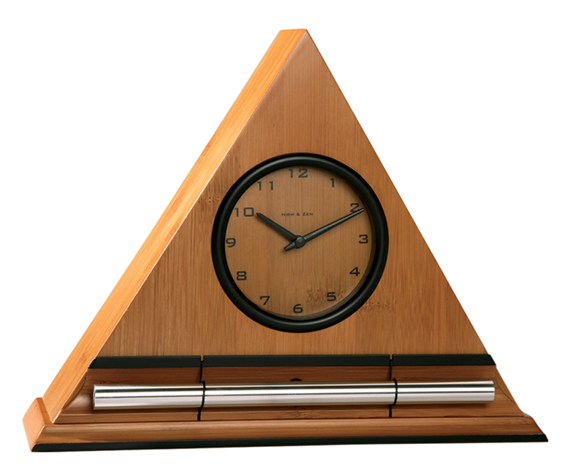 The Zen Alarm Clock for a Gradual Awakening
Posted in Bamboo Chime Clocks
 walking in waves, a mindfulness meditation There is nothing more soul-renewing than a very long, meandering, aimless walk. And I do mean aimless — as in, “I’m heading out! I have no idea how long I’ll be or where I’m going!”
I started walking this way quite by accident, in the midst of recovering from the heartache and confusion of losing my job. I had been slothful through winter, alternating between insomnia and sleeps so deep I wasn’t sure what day it was when I woke. But with the changing light of spring, I was beckoned out of doors.
Finding Peace Amidst the Chaos
I was in Manhattan, and cities are excellent places for meditative walks. They’re full of interruptions and distractions, but there is always a bus stop or a person with directions within easy distance. So you can suspend the anxiety about getting lost or getting home.
And all that noise does for humans what shape does for bats: Even if we aren’t tuning into it, it guides our steps and signals danger or direction.
A city walk also delivers the pleasure of unexpected architectural discoveries: trolls clinging to the corners of buildings, swags of flowers carved into stone friezes.
These days I’m walking in the country, in coastal Rhode Island, where the blackbirds and foxes keep me company.
“Exploring the world is one of the best ways of exploring the mind,” writes Rebecca Solnit in “Wanderlust: A History of Walking.” The mind eventually begins to follow the feet, and a logjam of anxiety starts to come loose.
 Soul-Renewing Walking Meditation From Type A to Point Be
Long walks are the cure for writer’s block, lover’s block, mother’s block, friendship block, and any other kind of obstacle that we try to deliberately gnaw our way through, worrying over the problem and getting nowhere.
Better to let yourself really go nowhere and experience the delicious paradox of losing yourself to find yourself.
Walking with indirection has, at heart, a paradoxical benefit. When you stop making decisions for a little while, before you know it, you are filled with purpose, and the goals and paths of your life take on a new clarity.
It is by such grace that life unfolds; how lovely to suspend disbelief (I will never feel good again) and arrive at conviction: Life is wonderful! What a joy to be moving!
How-To: Walking as Meditation
1. Focus on your breathing. Paul Smith, walking-meditation instructor at Lake Austin Spa Resort in Austin, Texas, recommends inhaling slowly through your nose for 4 steps, keeping your breath in for 2 steps, exhaling for 4 steps, then waiting 2 steps before inhaling again.
2. Gently corral your wandering mind. Try repeating an affirmation in time with your breathing and steps. Smith recommends phrases such as “My life is a pleasure,” “I speak the truth and listen without judging,” or “I see all things in clarity.” Another trick: Visualize putting your worrisome thoughts in a balloon and letting go of the string.
3. Hold one hand behind your back. This will help slow you down. “Don’t let yourself get into race-walking mode,” Smith says.
4. Pay attention to your senses. Focus on vision first, which is easiest. Notice a plane overhead, leaves in the trees. Then notice sounds around you, the sun on your face, the smell of cut grass. Smith says, “These are ways to stay in the present.”
5. On a practical note: If you’re walking for distance, carry a little “mad money” in case you tucker out miles away. But no cell phone — or turn it off if you must have it on you.
adapted from Wholeliving.com, September 2010 by Dominique Browning
 Singing Bowl Meditation Timer & Alarm Clock
Our Zen Timepiece’s – (a Singing Bowl Meditation Timer) acoustic 6-inch brass bowl-gong clock is the world’s ultimate alarm clock, practice timer, and “mindfulness bell.”
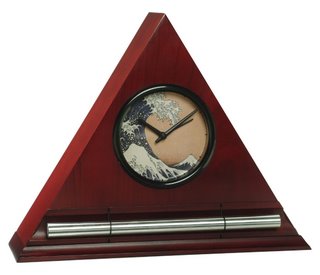 Hokusai Wave Zen Meditation Timer and Alarm Clock Now & Zen – The Meditation Timer Store
1638 Pearl Street
Boulder, CO 80302
(800) 779-6383
Posted in Chime Alarm Clocks, Hokusai Wave, intention, Japanese Inspired Zen Clocks, Meditation Timers, Meditation Tools, mindfulness practice, nature, Walking Meditation, Well-being, Zen Timers
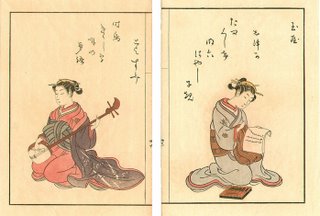 Shamisen and Letter by Harunobu 1. Spirituality
Experience your spirituality as a gift and a process.
2. Compliments
Don’t shrug off compliments; honor and remember them.
3. Experiences
Invest in experiences, not just objects.
4. Grace
Try doing even the most menial tasks mindfully and with grace.
5. Compassion
Anger has a way of evaporating in the face of compassion.
6. Calm
Calm is a place you create in the midst of chaos.
7. Simplicity
There’s no substitute for simple pleasures.
8. Laughter
Laugh a little — every day.
9. Physical
The spiritual and the physical cannot be separated; you need one to experience the other.
10. Pleasure
Find pleasure in the simplest tasks.
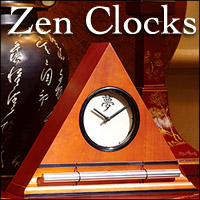 Zen Clocks with Chime from Boulder, CO adapted from Body + Soul Magazine, 2009
Now & Zen – The Zen Alarm Clock Shop
1638 Pearl Street
Boulder, CO 80302
(800) 779-6383
Posted in Meditation Timers, Meditation Tools, mindfulness practice, Well-being
 Insomnia Suggestions You’ve tried it all—chamomile tea, hot baths, aromatherapy, melatonin—and nothing works. Your insomnia obviously calls for something a little stronger than a glass of warm milk. In fact, you need something that packs a bit more punch, but you don’t want to resort to sleep medications. Good news: Sleep researcher Roger Cole, PhD, from Del Mar, California, recommends two powerful, natural sleep therapies that have helped many insomniacs drift off peacefully to dreamland.
Resetting your body clock
If you have difficulty falling asleep at night and waking up in the morning, try dawn/dusk simulation, a form of sleep therapy that resets your body clock. Your body uses natural signals, including sunlight and darkness, to trigger hormones that make you active in the morning and sleepy at night. Bright light, particularly morning sunlight, provides the strongest signal the body uses to regulate this hormonal cycle, called your circadian rhythm. So if you typically awaken before sunrise or work in artificially lit environments, your circadian rhythm may have gotten out of sync. Using a light box may help you reset it.
Here’s how to do it: Spend the first half hour of each morning in simulated “dawn,” by sitting in front of a light box. You can do this while you eat your breakfast, read the paper, or go about your morning routine. Before bed, spend time in simulated “dusk” by closing the curtains and keeping lights dim. This combination should reset your clock within a few days.
If sleep problems continue, wake up and use your light box a half hour earlier for a few days. Cole says eventually you’ll hit a “magic sleep spot.” Once you do, you should be able to discontinue the therapy. But people who are true night owls may need to keep using both dawn and dusk simulation indefinitely to stay on their new schedules.
Cole recommends a light box that delivers 10,000 lux at a distance of at least 20 inches. A large field of view (at least 18” wide) is a plus, and a box that gives white light with an extra boost of blue or blue-green may be more effective than a plain white box.
 sleepless nights call for solutions Sleep restriction
If you have trouble falling and staying asleep, and spend time tossing and turning, sleep restriction therapy may be the ticket. This therapy is based on the theory that although your body may have learned to get along without sleep, it’s actually possible for you to retrain it.
Start by estimating how much sleep you typically get each night, as opposed to how many hours you stay awake in bed hoping for sleep (say five hours of sleep for seven in bed). Stay in bed only for the amount of time you usually sleep (the five hours), scheduling your bedtime and wake-up time appropriately (say, 1 a.m. to 6 a.m.). Meanwhile, use your bedroom for sleeping only (and for, well, you know). And no fair taking mid-day naps.
If you do wake up during the night, lie awake in bed no more than 15 minutes. Then leave the bedroom, stay warm, and engage in a peaceful activity in a dimly lit room, returning to bed when you feel ready to sleep. And now—here’s the hard part—get up at your scheduled wake-up time (6 a.m., in our example), no matter what.
By the third or fourth night, you’ll be so exhausted that you’ll probably sleep through the night. Once you sleep well two or three nights in a row, increase your time in bed by 15 minutes—five hours and 15 minutes in our example. The extra minutes may cause some wakefulness again, so keep repeating your new schedule until you sleep soundly again for a couple of days. Then, you can add another 15 minutes, so you’re up to five hours and 30 minutes. Gradually work yourself up to seven hours of sleep (eight or nine may be unrealistic).
Obviously, sleep restriction requires self-discipline. But Cole reports that this therapy has been “experimentally proven to be as powerful as sleeping pills for helping insomniacs sleep, and is probably more powerful for the long term.” He does caution that sleep disorders can mask depression; if you notice other symptoms of depression, talk to your health practitioner before you try this therapy.
adapted from Natural Solutions Magazine, April 2006 by Nina Zolotow
 Gentle Awakening Alarm Clocks with Peaceful Chime Now & Zen – The Zen Alarm Clock Store
1638 Pearl Street
Boulder, CO 80302
(800) 779-6383
Posted in Chime Alarm Clocks, sleep, Sleep Habits
« Previous Page — « Previous Entries
Next Entries » — Next Page »
|
|
|
|